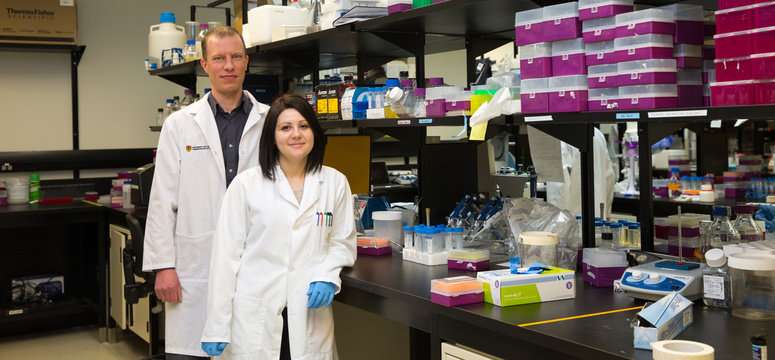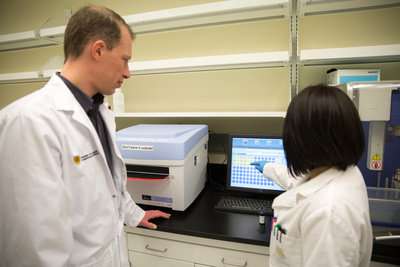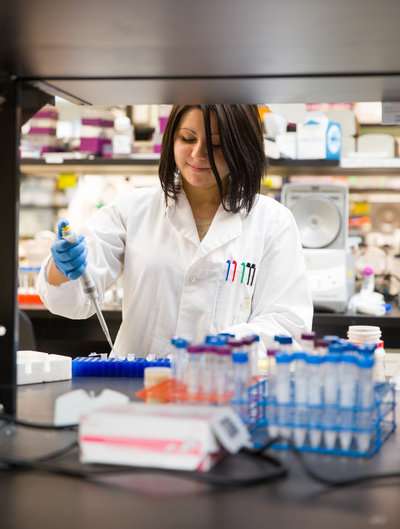New diagnostic method makes testing for infections in people and animals quick and easy

Researchers in the University of Calgary Faculty of Veterinary Medicine (UCVM) have developed a fast, portable and inexpensive way to test humans and animals for different types of chronic and infectious diseases. This new "point of care" method tests for signals of infection, such as specific antibodies, in blood, milk or saliva samples.
"For a long time, there's been a need in the health-care system for a diagnostic device that's available to test for anything, anywhere, anytime, to anyone," says Jeroen De Buck, associate professor, bacteriology, at UCVM.
De Buck and PhD student Marija Drikic built on the concept of a simple glucometer — the device used to monitor blood sugar levels in diabetic patients — to develop their new biosensor technology.
"Glucometers are arguably the most successful class of biosensors currently on the market," says De Buck. "We aimed to develop a technology similar in design and function but with the versatility to detect of a wide range of signals of infection."
Out of the lab and into the field
Their invention — the TreAsure Assays Biosensor — uses an engineered enzyme to convert signals of infection into glucose and the resultant glucose can then be measured. It forms the basis of convenient point-of-care tests for animal or human chronic and infectious disease.

"A cow infected with bovine leukemia virus produces antibodies as a response," De Buck explains. "Our biosensor will detect the antibodies in a pin-prick of blood. The enzyme will make glucose proportionately to the antibodies that can then be instantaneously measured."
The new portable device doesn't need complex sample preparation or handling. So, testing a cow in a remote field, for instance, is simple. The technology has many potential applications, from people using it at home to monitor their health to veterinarians checking the progression of a disease in animals.
"After a sample is taken, it gives a signal that's easily read out and quantitative. So, it's not just showing a line like you get on a pregnancy test. Instead you have quantitative results that you can follow up to see how active the infection is."

Looking to expand the biosensor's testing scope
De Buck and Drikic outline the biochemistry behind their biosensor in a paper published in Biotechnology and Bioengineering. They are now testing prototypes, and have incorporated a company, Creative Protein Solutions Inc., to bring the technology to market. They're looking for investors and are working on expanding the biosensor's capabilities to detect signs of inflammation and other chronic diseases.
"It's unique that a single new technology forms the basis of simple test strips for point-of-care use, and can also improve lab-based testing," De Buck says.
More information: Marija Drikic et al. Split trehalase as a versatile reporter for a wide range of biological analytes, Biotechnology and Bioengineering (2018). DOI: 10.1002/bit.26556
Journal information: Biotechnology and Bioengineering
Provided by University of Calgary





















